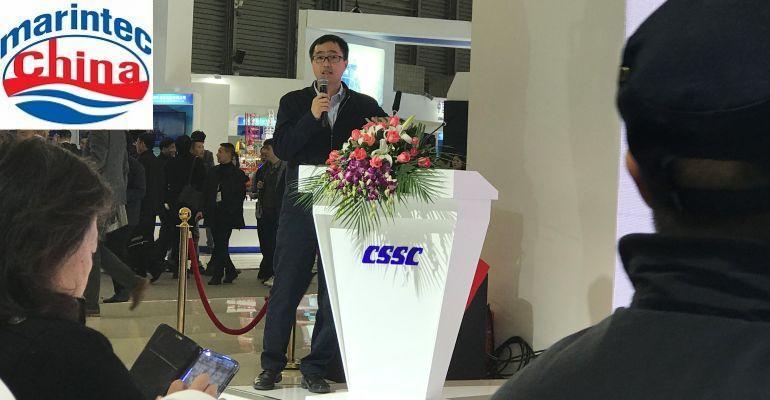Liu Ersen, senior analyst and offshore market research director at CSIRC, considered that a supply-demand balance has been reached for the once oversupplied shipping market – albeit a fragile balance.
“The shipping market is definitely on a path of recovery, though it would be fair to say that it needs another two to three years for the market to be completely out of the woods,” Liu told Seatrade Maritime News at Marintec China 2019 in Shanghai on Wednesday.
The more balanced market seen today has been due in part to cash-strapped owners losing their ability to place new orders and a tightening regulatory landscape that is demanding newbuildings to become more eco-friendly and energy efficient.
“One of the reasons for the decrease in newbuilding orders is that the investment direction for owners has been unclear, due mainly to IMO regulations,” Liu said.
With the upcoming IMO 2020 global 0.5% sulphur content cap entering into force, owners have a handful of options to choose – directly using the compliant low sulphur fuel, continue using high sulphur bunkers by installing scrubbers, or use clean gas LNG as fuel.
In addition to the IMO 2020 regulation, the IMO is further looking to enforce restrictions on greenhouse gas (GHG) emissions by 2030. These changes in regulation mean that ship specifications can no longer be based on previous simple models, but rather they will need to be equipped with more advanced equipment and technology in order to fulfil their operations as a ‘green’ ship, Liu said.
Coupled with the protracted slump in the shipbuilding sector and severe weakening of the shipping market, newbuilding orders have slowed down considerably.
In the first 10 months of 2019, a total of 46.58m dwt in newbuilding order capacity for merchant vessels was recorded, a plunge of 40% compared to the same period of 2018 and down 50% compared to the whole of 2018, according to CSIRC, a subsidiary of China State Shipbuilding Corporation (CSSC).
New orders for dry bulk carriers were recorded at 17.97m dwt between January to October 2019, down from 44.45m dwt in 2018. For tankers, new orders came up to 16m dwt for the first 10 months of this year, down from 26.84m dwt in 2018, while containership new orders were at 610,000 teu compared to 1.26m teu.
LNG carriers, on the other hand, is generating more interest with newbuilding orders at 6.23m cu m in capacity for the first 10 months of this year and 7.97m cu m for 2018 and, compared to just 820,000 cu m back in 2008.
CSIRC has forecast that China will demand more LNG carriers to satisfy the nation’s energy needs. In 2017, China imported 86.7m cu m of LNG requiring around 48 LNG carriers.
By 2020, China is anticipated to import 158m cu m of LNG requiring 88 LNG carriers. The numbers will increase by 2025 to 183m cu m of LNG imports requiring 101 LNG carriers and by 2030 to 222m cu m of imports needing 123 LNG carriers.
Copyright © 2024. All rights reserved. Seatrade, a trading name of Informa Markets (UK) Limited.
Add Seatrade Maritime News to your Google News feed.  |

